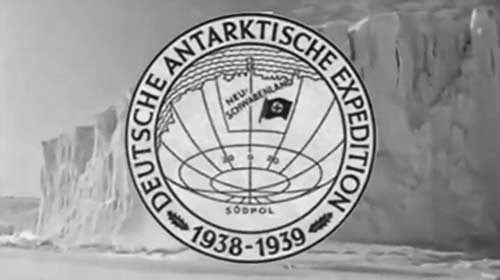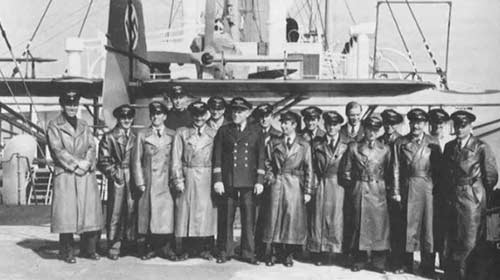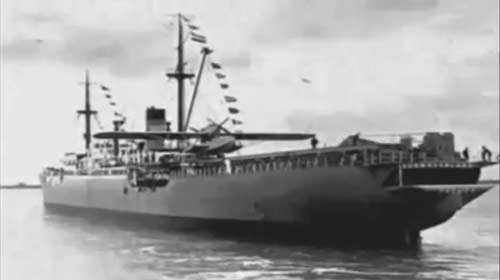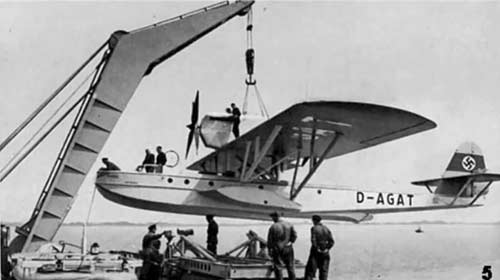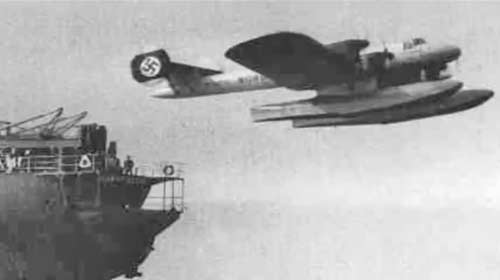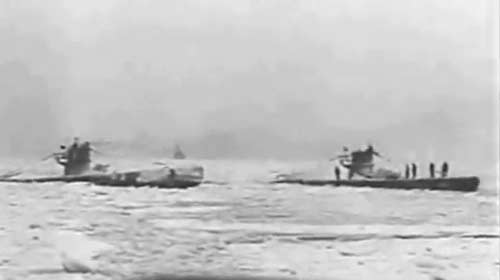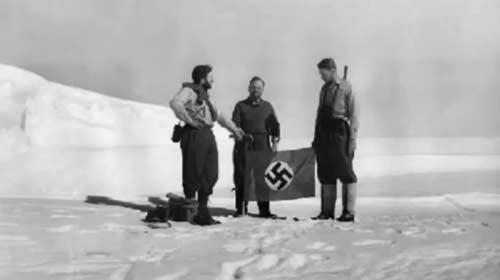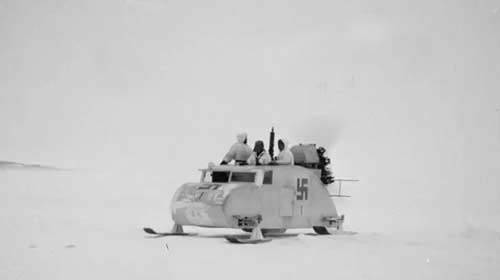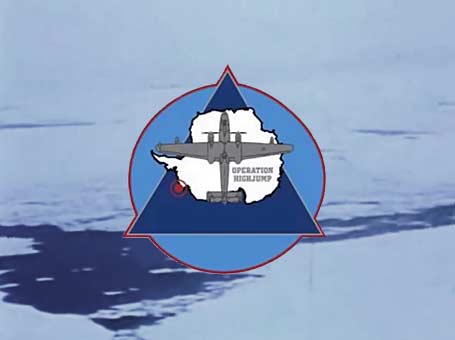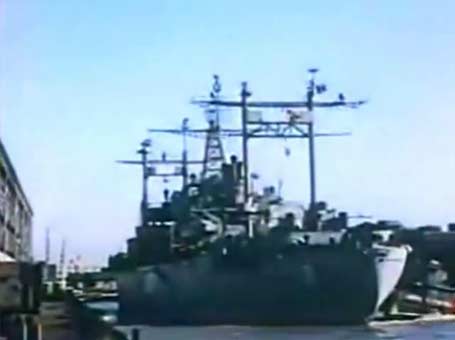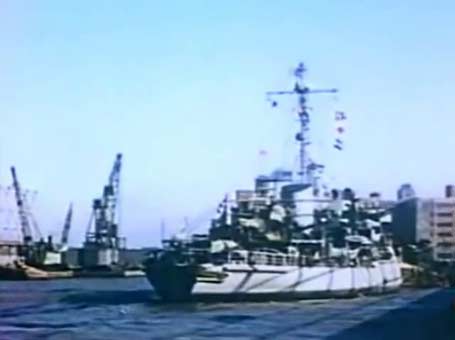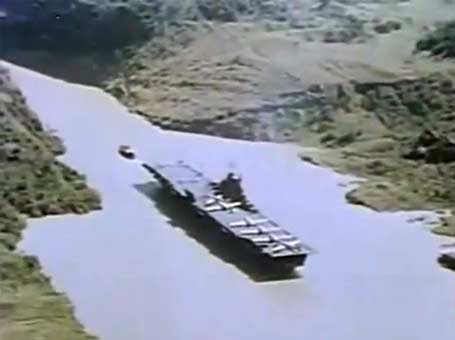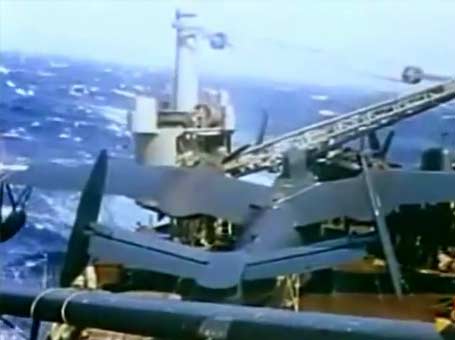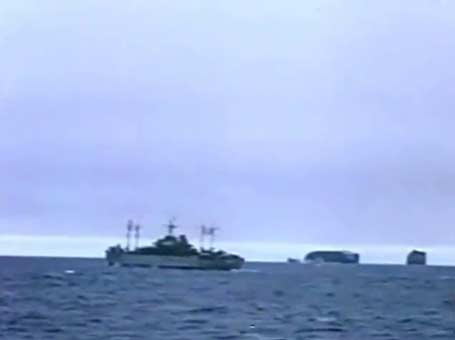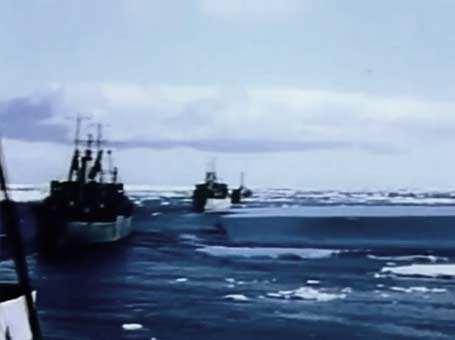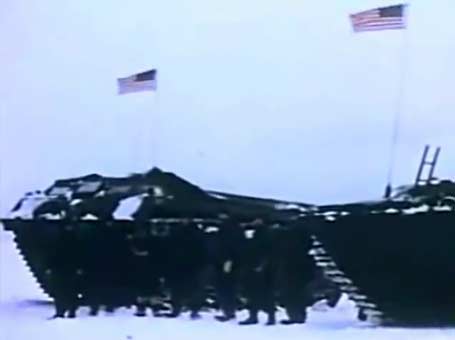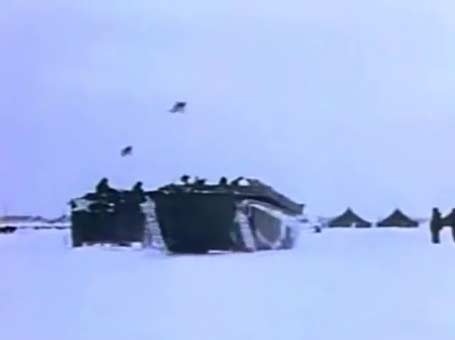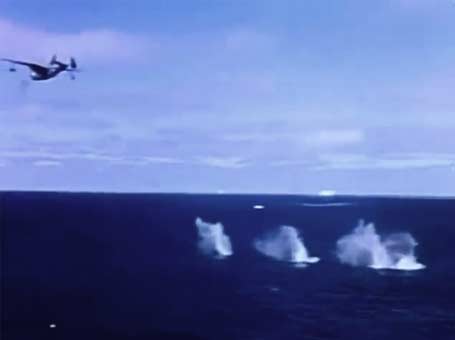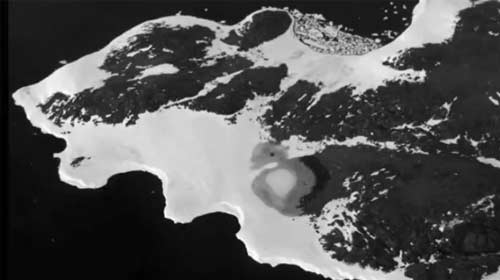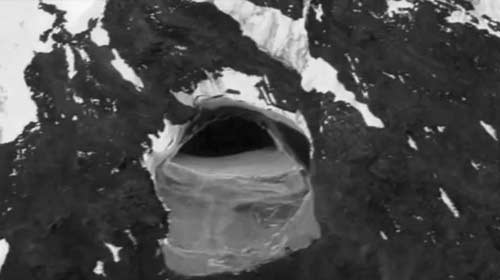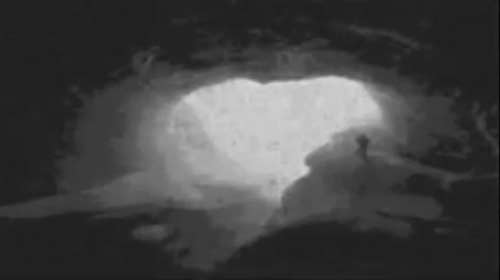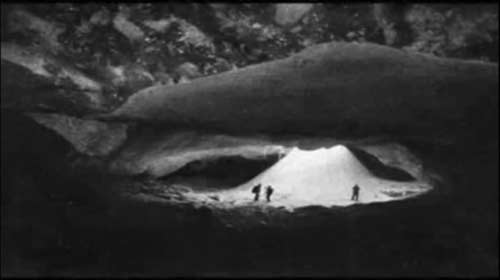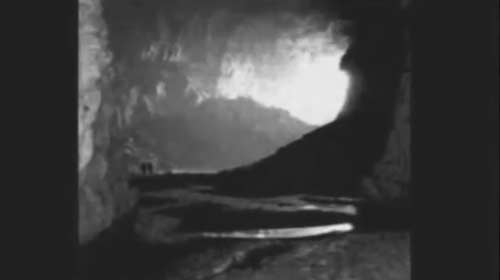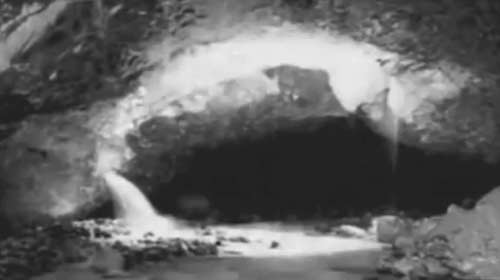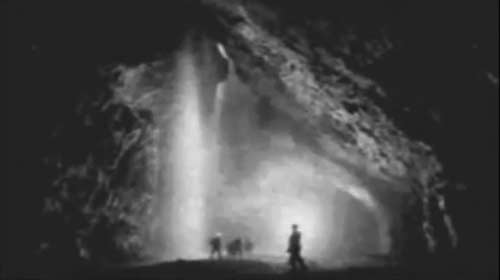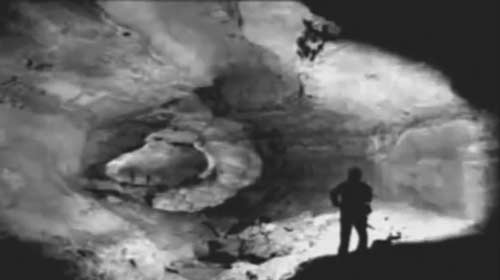




archives Episode 3 locations and facts...

Before the WWII an alleged German scientific expedition was arranged by the polar-experienced Captain Alfred Ritscher, who had already led some expeditions to the North Pole and proved courageous and skilful in critical situations.
The selected ship was the 'MS SCHWABENLAND, a German aircraft carrier used since 1934 for transatlantic mail delivery made by special seaplanes, the famous 'Dornier Wale'. These 'Wales' were mounted on steam catapults on the deck of the ship and could be started and refuelled this way easily. This arrangement worked very well during the expedition.
The 'SCHWABENLAND' was prepared for the expedition in Hamburg's shipyards, which cost the huge amount of 1 Million Reichsmark, nearly a third of the complete expedition budget.
The selected ship was the 'MS SCHWABENLAND, a German aircraft carrier used since 1934 for transatlantic mail delivery made by special seaplanes, the famous 'Dornier Wale'. These 'Wales' were mounted on steam catapults on the deck of the ship and could be started and refuelled this way easily. This arrangement worked very well during the expedition.
The 'SCHWABENLAND' was prepared for the expedition in Hamburg's shipyards, which cost the huge amount of 1 Million Reichsmark, nearly a third of the complete expedition budget.
"neuschwabenland" & "op.highjump"

‘Operation Highjump’ was comprised of some 4700 military personnel, six helicopters, six Martin PBM flying boats, two seaplane tenders, fifteen other aircraft, thirteen US Navy support ships and one aircraft carrier; the USS Philippine Sea. It seems incredible that so shortly after a war that had decimated most of Europe and crippled global economies, an expedition to Antarctica was undertaken with so much haste (it took advantage of the first available Antarctic summer after the war), at such cost, and with so much military hardware, unless the operation was absolutely essential to the security of the United States.
At the time of the operation, the US Navy itself was being taken apart piece by piece as the battle-tested fleet was decommissioned with its mostly civilian crew bidding farewell to the seas forever. The Navy was even forced to further recruitment to man the few remaining ships in service. Tensions across the globe were also mounting as Russia and America edged into a Cold War, possibly a Third World War that the US would have to fight with "tragically few ships and tragically half trained men." This made the sending of nearly 5,000 residual Navy personnel to a remote part of the planet where so much danger lurked in the form of icebergs, blizzards and sub-zero temperatures even more of a puzzle.
At the time of the operation, the US Navy itself was being taken apart piece by piece as the battle-tested fleet was decommissioned with its mostly civilian crew bidding farewell to the seas forever. The Navy was even forced to further recruitment to man the few remaining ships in service. Tensions across the globe were also mounting as Russia and America edged into a Cold War, possibly a Third World War that the US would have to fight with "tragically few ships and tragically half trained men." This made the sending of nearly 5,000 residual Navy personnel to a remote part of the planet where so much danger lurked in the form of icebergs, blizzards and sub-zero temperatures even more of a puzzle.
The 'historical' beginnings of German interest and research into the Antarctic or South Polar region itself, began in 1873, when Sir Eduard Dallman on behalf of the newly founded German Society of Polar Research, discovered new Antarctic routes with his ship 'GRONLAND'.
Dallman discovered the "Kaiser-Wilhelm-Inseln at the western entrance of the Biskmarkstrasse, along the Biscoue Islands. Exploring the Polar Regions, the Germans were already at this time quite innovative, for the 'GRONLAND' was the first steamship to see the Antarctic ice at all.
Within the next 60 years 2 further expeditional thrusts took place, and two complete expeditions were completed, namely 1910 under Wilhem Filchner with his ship 'DEUTSCHLAND'; and in 1925 with the specially designed polar expedition ship, the 'METEOR' under the command of Dr. Albert Merz.
Dallman discovered the "Kaiser-Wilhelm-Inseln at the western entrance of the Biskmarkstrasse, along the Biscoue Islands. Exploring the Polar Regions, the Germans were already at this time quite innovative, for the 'GRONLAND' was the first steamship to see the Antarctic ice at all.
Within the next 60 years 2 further expeditional thrusts took place, and two complete expeditions were completed, namely 1910 under Wilhem Filchner with his ship 'DEUTSCHLAND'; and in 1925 with the specially designed polar expedition ship, the 'METEOR' under the command of Dr. Albert Merz.
Images of the Antarctic expedition of the MS Schwabenland
the operation "highjump"
Admiral Byrd, was a strategic choice as he had pioneered the technology that would be a foundation for modern polar explorations He had been repeatedly decorated, had undertaken many expeditions to Antarctica and was also the first man to fly over both poles. However, the task force itself remained strictly under the military command of Rear Admiral Richard Cruzen
The crew of the 'SCHWABENLAND' was prepared and scheduled by the German Society of Polar Research. Precisely, this society also made the sensational step to invite Richard E. Byrd, the most famous American Antarctic researcher. In the middle of November 1938 he arrived in Hamburg.
Byrd, who had flown across the South Pole as the first human in 1929, was already at this time a living legend, a national hero to the Americans and most of the polar researchers. In 1938 he was still a civilian. This invitation to the Germans could have been a typical irony of history, for nearly ten years later exactly, this Richard E. Byrd, (then in the rank as US NAVY admiral), allegedly got the instruction to destroy the secret German Antarctic base 211. To do this, he was given the command of the biggest military force on the Antarctic ice ever seen, 13 ships and nearly 4000 staff. That mysterious operation was called "Highjump", which is said to have ended in a catastrophic failure.
Byrd, who had flown across the South Pole as the first human in 1929, was already at this time a living legend, a national hero to the Americans and most of the polar researchers. In 1938 he was still a civilian. This invitation to the Germans could have been a typical irony of history, for nearly ten years later exactly, this Richard E. Byrd, (then in the rank as US NAVY admiral), allegedly got the instruction to destroy the secret German Antarctic base 211. To do this, he was given the command of the biggest military force on the Antarctic ice ever seen, 13 ships and nearly 4000 staff. That mysterious operation was called "Highjump", which is said to have ended in a catastrophic failure.
Images of free ice land and the caves found in the Antarctic expedition of the MS Schwabenland
Use the keyboard arrow keys or the mouse wheel to scroll the page horizontally


go left end
























